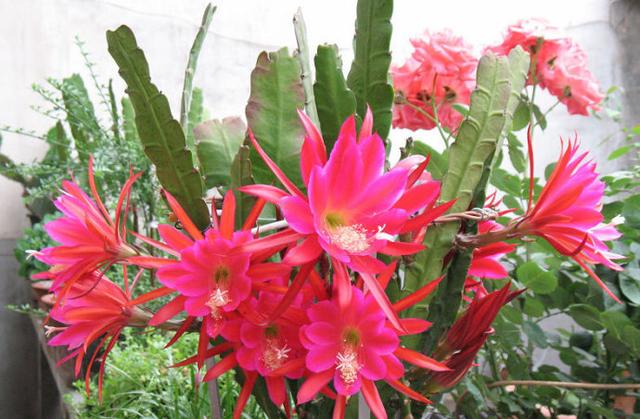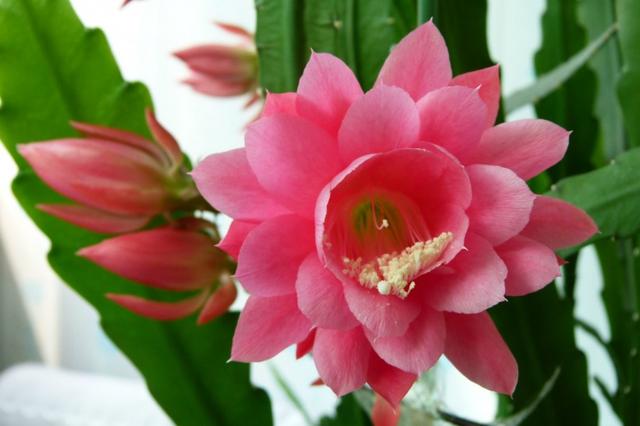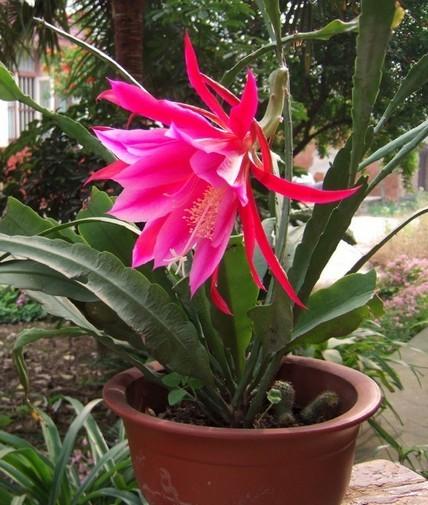Planting methods and matters needing attention of Ling Arrow Lotus ①
The nickname of the lotus flower-he Ling Arrow, Fairy Arrow, Red Peacock, Peacock Orchid. Origin: originally from south-central Mexico and glass, Peru and other places. Let's give a detailed introduction to it:
1. Soil selection: the arrow lotus likes slightly acidic or sandy soil with loose soil, fertility, smooth drainage and rich organic matter, and is prone to root rot when growing in clayey soil.
two。 Watering: ① makes the arrow lotus like to be moist, but if the soil is too wet, it can easily lead to mildew and rot of the roots or withering of the buds, so the pot soil should be drier.
② is not suitable for watering too much in spring, and it is better to keep the basin soil slightly moist.
When the climate of ③ is dry in summer, in addition to normal watering, you should often spray the abnormal stem of the plant with clear water, and spray water on the ground around the flowerpot to increase the relative humidity of the air and accelerate the growth and flowering of the plant.
④ should gradually reduce the amount and frequency of watering after entering autumn, and put the flowerpot in a sunny place.
⑤ should control watering in winter to make the basin soil slightly wet and dry.
3. Cultivation: ① cut the stem with full tissue on the mother plant of Arrow Lotus, cut it into 6 cm long, and let it dry for 2 days.
② will cut the stem into the basin soil, the insertion depth of 2 cm to 3 cm can be.
③ should be watered in time after insertion, and placed in a semi-cool place, watering every 3 days to keep the soil moist.
④ after a week, can gradually let potted flowers receive scattered light, after about a month can grow roots, after that can be normal care.
4. Illumination: in spring and autumn, potted flowers should be placed on the balcony with smooth ventilation and good light transmittance. When the summer temperature is high and the weather is hot, it is necessary to prevent the plant from being exposed to strong sunlight for a long time. It can be placed in a shady, cool place that will not be exposed to direct sunlight. It should be noted that the sun should not be excessively shielded or placed in a shaded place for too long, otherwise the flowering of the plant will be affected.
5. Temperature: the arrow lotus likes a warm and semi-shaded environment and cannot resist the cold. When planting in the northern region, it is necessary to spend the winter indoors. After entering the room, the potted flowers should be placed in a place with plenty of light, and the indoor temperature should be controlled at 10-15 ℃. Too low temperature can easily lead to plant death, and too high temperature will easily make plants grow too long, which is not conducive to flowering and maintaining good plant shape.
6. Fertilization: the arrow lotus is more fertile. In the growing season, it can be diluted with fully rotten sesame sauce dregs, cake fertilizer or horseshoe slices with water, once every 15 days. After the Spring Festival, liquid fertilizer can be applied every 10 days to accelerate plant growth. It is necessary to apply available phosphate fertilizer twice in the budding stage, which can make the plant flowers big and colorful. It should be noted that too much nitrogen fertilizer should not be applied, otherwise the leafy stem will grow too luxuriantly and adversely affect the flowering of the plant.
7. Reproduction: the arrow lotus can be propagated by cutting and grafting.
8. Disease and insect reproduction: the frequent occurrence of arrow lotus is that diseases are mainly brown spot and various insect pests.
① when Arrow Lotus suffers from brown spot, it can be sprayed with 1000 times of carbendazim wettable powder.
② when the arrow lotus is endangered by shell insects, aphids and red spiders, 1000 times of fenitrothion EC can be sprayed to kill.
③ when the arrow lotus is damaged by root-knot nematode, it can be treated with 1000 times dilution of 80% dibromochloropropane EC.
9. Pruning: when changing flowerpots every spring or autumn, ① needs to cut off the dried and rotten roots of the plant to promote the germination of new roots.
② should set up a scaffold for the plant as soon as possible during planting to bind the flexible abnormal stem so as not to break the abnormal stem and tilt the plant.
In the growing season, ③ should wipe off the excess lateral buds and basal branches as soon as possible in order to reduce the loss of nutrients and ensure flowering.





- Prev

Technical scheme for planting watermelon in the whole process
On November 7, 2017, Wang Hanrong, a researcher at the second Watermelon Industry Forum of Zhejiang Academy of Agricultural Sciences, delivered a keynote speech on "the Technical Plan for the whole process of Watermelon planting". ...
- Next

Planting methods and matters needing attention of beans
Seasonal vegetable beans, salty for young and old, is one of the most popular vegetables in the season. Bean is a kind of high-quality legume vegetable, which is beautiful in appearance and rich in.
Related
- Fuxing push coffee new agricultural production and marketing class: lack of small-scale processing plants
- Jujube rice field leisure farm deep ploughing Yilan for five years to create a space for organic food and play
- Nongyu Farm-A trial of organic papaya for brave women with advanced technology
- Four points for attention in the prevention and control of diseases and insect pests of edible fungi
- How to add nutrient solution to Edible Fungi
- Is there any good way to control edible fungus mites?
- Open Inoculation Technology of Edible Fungi
- Is there any clever way to use fertilizer for edible fungus in winter?
- What agents are used to kill the pathogens of edible fungi in the mushroom shed?
- Rapid drying of Edible Fungi

